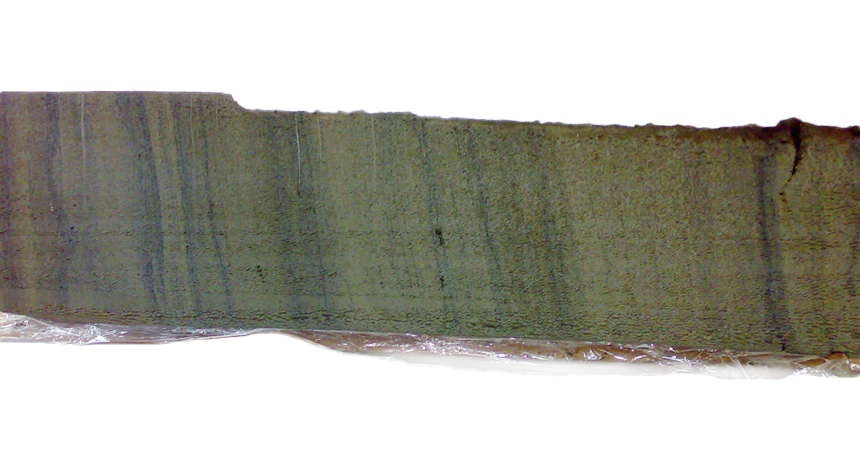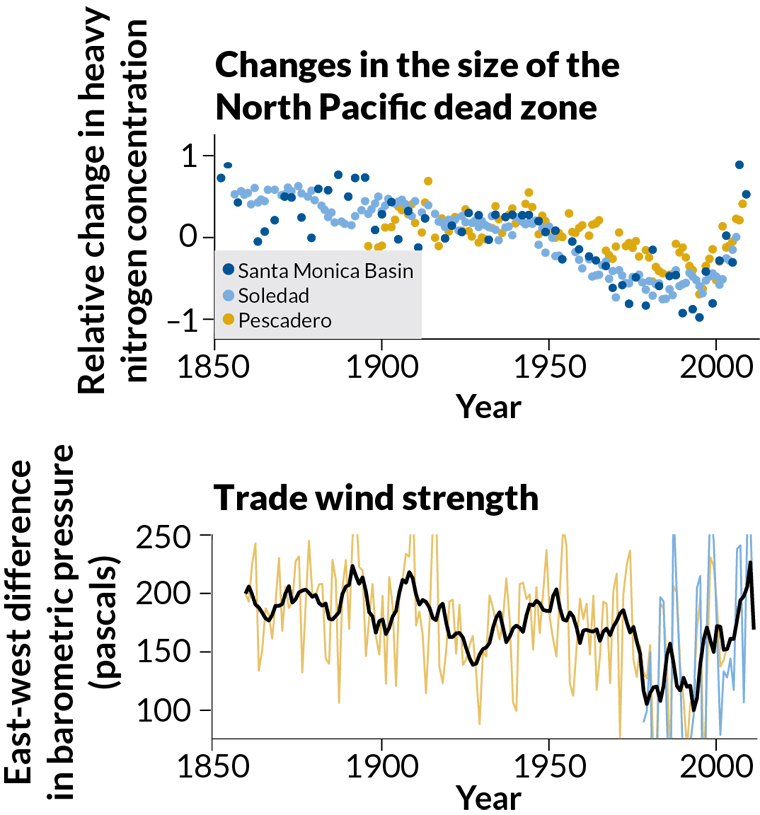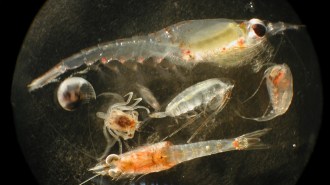
SUFFOCATING SEA A timeline preserved in the layers of sediment cores (one shown) reveals that the oxygen-deprived North Pacific dead zone shrank during much of the 20th century warming period.
Jacob Mey
- More than 2 years ago
Waning winds could give the world’s largest oxygen-starved ocean region a breath of fresh air as the planet warms, researchers report in the Aug. 8 Science. Scientists previously thought the North Pacific dead zone would grow, not shrink, under climate change.
Dead zones naturally form at depths of about 200 to 1,000 meters, where sinking organic matter from the surface nourishes oxygen-gobbling bacteria. Because warm water can hold less dissolved oxygen than cold water, scientists have suggested that low-oxygen regions would expand as the climate warms. Earth scientist Curtis Deutsch of the University of Washington in Seattle and colleagues now show that the North Pacific dead zone shrank during much of the 20th century despite rising temperatures.
“Our results totally go against the paradigm that a warming climate causes low-oxygen regions to expand,” says Deutsch. “This region actually got better oxygenated as the climate warmed up.”
The North Pacific dead zone stretches westward from the coasts of North and Central America and encompasses an area larger than Canada. Most marine life cannot survive in the zone’s low-oxygen waters and either vacates or suffocates.

To reconstruct the dead zone’s recent past, Deutsch’s colleagues collected sediment cores from the seafloor at three sites under the North Pacific dead zone, near California and Mexico. Each millimeter-thick layer of accrued sediment corresponds roughly to a year in time, the team says. By precisely measuring the amount of heavy nitrogen in each layer deposited by oxygen-draining bacteria, the researchers inferred relative changes in the zone’s size over the last 150 years.
The zone shrunk for most of this period, the data suggest, coincident with rising temperatures and climate data showing weakening Pacific trade winds. This finding shows that wind, not temperature, is the biggest driver of the North Pacific dead zone, Deutsch says. As the wind wanes, fewer nutrients are drawn up along the coasts, which slows the cycle of oxygen depletion, he proposes.
Over the last two decades, the Pacific trade winds have intensified (SN: 3/22/14, p. 12), causing the dead zone to rebound. But in the long run, Deutsch says, most climate simulations predict that the trade winds will weaken in response to rising temperatures. Recent research, however, complicates these predictions. On August 3, researchers reported in Nature Climate Change that warming in the Atlantic Ocean could supercharge the Pacific trade winds.
Changing wind patterns may also shrink other low-oxygen regions caused by coastal upwelling, such as in the South Pacific dead zone, Deutsch says. While shrinking dead zones will increase the range of some sea creatures in the eastern Pacific, Deutsch warns that the dangers of ocean oxygen loss elsewhere remain. “Even though these regions of extremely low oxygen might get better oxygenated, the vast volume of ocean will lose oxygen as the oceans warm,” he says. “That’s a huge negative change in terms of the habitat of higher organisms.”
While the greater risk remains, oceanographer Eric Galbraith of McGill University in Montreal says the results come as a relief. “There has been a huge amount of concern that these oxygen minimum zones were growing extremely rapidly,” he says. “This research puts some water on that fire by suggesting that this expansion will turn around once the trade winds calm down a bit.”
Editor’s Note: This article was updated August 15, 2014, to correct the label on the y axis of one graph.




